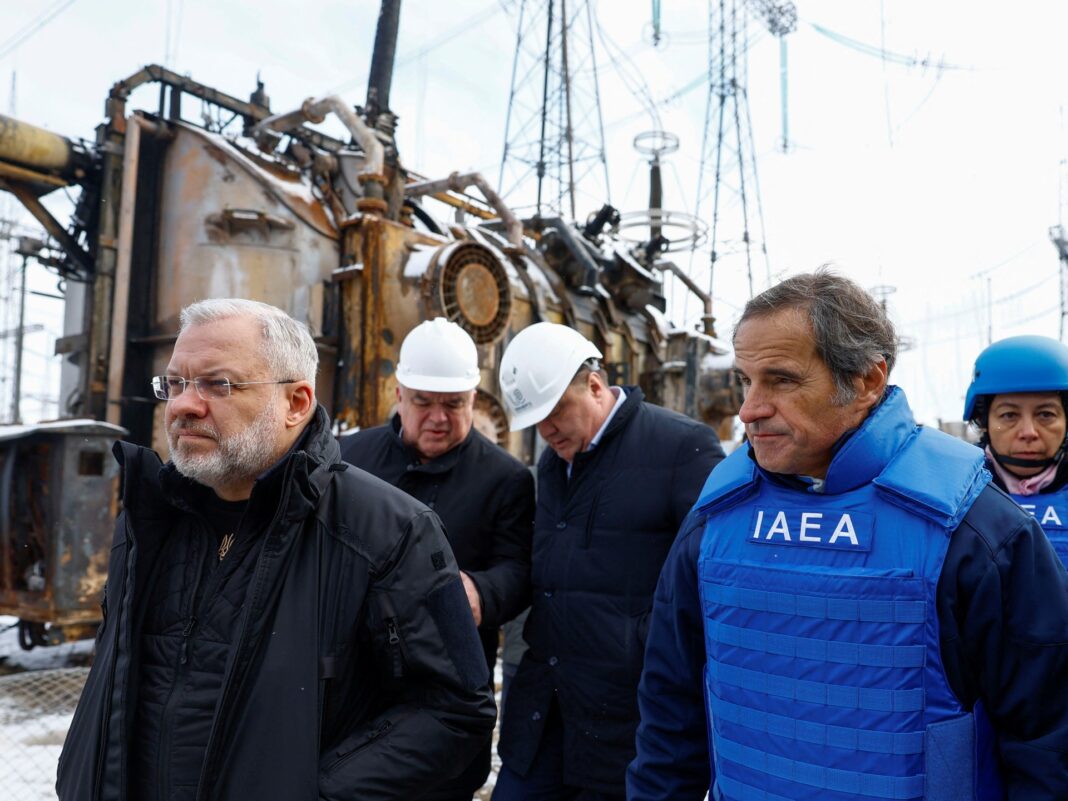Moscow has constantly bombarded Ukraine’s energy infrastructure throughout its three-year invasion, although it has avoided direct strikes on nuclear plants.
The head of the United Nations nuclear watchdog has sounded the alarm about the continued risk of nuclear accidents as a result of Russia’s attacks on Ukraine’s power grid.
Rafael Grossi, the International Atomic Energy Agency (IAEA) chief, arrived in the Ukrainian capital Kyiv on Tuesday and warned of dire consequences not just from direct hits on power plants, but from strikes on substations and other infrastructure that can cause disruptions to the overall energy system.
“I’m at Kyivska electrical substation – an important part of Ukraine’s power grid essential for nuclear safety,” Grossi wrote on X, after inspecting an electricity distribution substation.
“A nuclear accident can result from a direct attack on a plant, but also from power supply disruption.”
Moscow has constantly bombarded Ukraine’s energy infrastructure, including substations, throughout its three-year invasion, although it has avoided direct strikes on Ukraine’s nuclear plants.
Grossi posted pictures of his visit to the substation alongside Energy Minister German Galushchenko, as well as his tour of what appeared to be defences against Russian strikes.
He said he would visit Russia later this week to discuss the situation in Ukraine and the Russian-occupied Zaporizhzhia nuclear power plant.
Russia captured the plant, Europe’s biggest nuclear power station, soon after its forces went into Ukraine in February 2022.
“It’s essential that I, in the discharge of my obligations, keep channels of communication constantly,” Grossi told a news briefing.
The IAEA has said Grossi’s trip to Kyiv will include high-level meetings to ensure nuclear safety in the ongoing war.
Growing reliance on nuclear power
Three years of relentless Russian strikes on its power grid have left Ukraine reliant on nuclear power for more than half of its electricity generation. That nuclear power is generated by three functioning plants in the country.
Disruptions to power supplies to nuclear plants can interrupt important processes, including the cooling of reactors. Experts warn that can have devastating consequences.
In September, Ukraine and the IAEA agreed that the agency’s experts would monitor the situation at key Ukrainian substations in addition to observing nuclear plants.
Nuclear switchyards located outside the perimeters of the country’s functioning nuclear plants are considered a particularly vulnerable link in the energy chain.
“If two [nuclear switchyards] are hit, we are out of supply for a minimum of 30 to 36 hours, and there will be a huge limitation on energy supply for at least three weeks, best-case scenario,” said Oleksandr Kharchenko, a Ukrainian energy industry expert.
Meanwhile, the continued risks posed by Russian attacks have heightened scrutiny of Energy Minister Galushchenko.
Despite more than a year of warnings that the sites are vulnerable to potential Russian attacks, current and former Ukrainian officials have accused Galushchenko of failing to act swiftly.
Lawmakers cited failures to protect electricity infrastructure sites in a resolution calling for Galushchenko’s removal last month.


